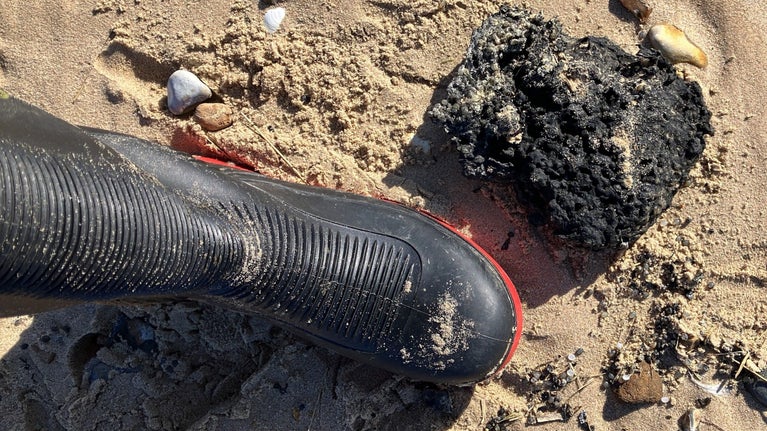Clean-up of plastic pollution
- Published:
- 21 March 2025
- Last updated:
- 28 March 2025

The Maritime and Coastguard Agency, Kings Lynn and West Norfolk Borough Council, and their contractors, responded swiftly to assess the impact of plastic pellets washed ashore at Brancaster Beach and to carry out a clean-up operation.
How to report plastic pollution
You can report any washed-up plastic pollution you find on our beaches using the online form on the North Norfolk District Council website – see link at the foot of this page.
Plastic pellets wash up
Following the collision in the North Sea between the Stena Immaculate and the Solong, an oil tanker and container ship, plastic pellets called nurdles and pieces of burnt plastic resin were washed ashore.
The collision occurred off the Yorkshire coast, but winds and tides resulted in these plastic pieces, which range in size, being scattered along the Norfolk and south Lincolnshire coast.
Brancaster Beach clean-up operation
Contractors working for the Maritime and Coastguard Agency carried out an initial assessment of the debris that had washed up. They gathered up the pieces of plastic and moved them beyond the tide line, ready to be removed from the beach.
On 20 March, the next phase of the clean-up operation took place, co-ordinated by Kings Lynn and West Norfolk Borough Council with support from specialist contractors.
On 26 March, with rising tides, Kings Lynn and West Norfolk Borough Council appointed the spill response company, Oracle, to use a special mechanical vacuum to help collect some of the smaller pellets along the strandline.
It is estimated that the clean-up gathered approximately 40,000 plastic pellets from the beach.
Clean-up completed before tides turned
Victoria Egan, General Manager for the National Trust on the Norfolk Coast, said:
"As a conservation charity, we're incredibly grateful for the response and support we've received from multiple agencies and authorities in cleaning up the plastic pellets that have washed ashore at Brancaster Beach. With tides turning this week, Oracle's use of a mechanical vacuum to collect and remove some of the loose nurdles from the strandline comes just in time.
"We remain deeply concerned about the long-term impact of this plastic pollution on the Norfolk coast and its wildlife, which could continue to be washed up for weeks and months to come. Any pollution incident can have a devastating impact on wildlife and this is a vital time for many migratory birds as they return to our shores for the breeding season, as well as marine life including seals and fish."
Plastic pollution - what to look out for
- Small semi-translucent balls, which are the "raw" plastic that is later moulded into everyday items. Some of these are charred by the intense fire that followed the collision.
- Small clumps of blackened pellets, where the individual pellets have melted together in the heat.
- Larger masses of plastic debris.
Members of the public are advised not to touch or collect this debris and to keep dogs on leads in the area.
How to report plastic pollution
You can report any washed up plastic pollution you find on our beaches using the online form that is currently being hosted by North Norfolk District Council (NNDC).
To report a coastal issue, you will need to:
- report the issue using the NNDC Report a coastal issue form
- select beach debris in the type of issue dropdown box
- add any additional information (if possible) such as location on the beach or nearby landmarks
- move the pin on the map to the location where you spotted the pollution
Any reports for beaches in our area will then be forwarded onto the relevant local authority team, who will then assess the pollution and arrange clean-up with the relevant landowner.
